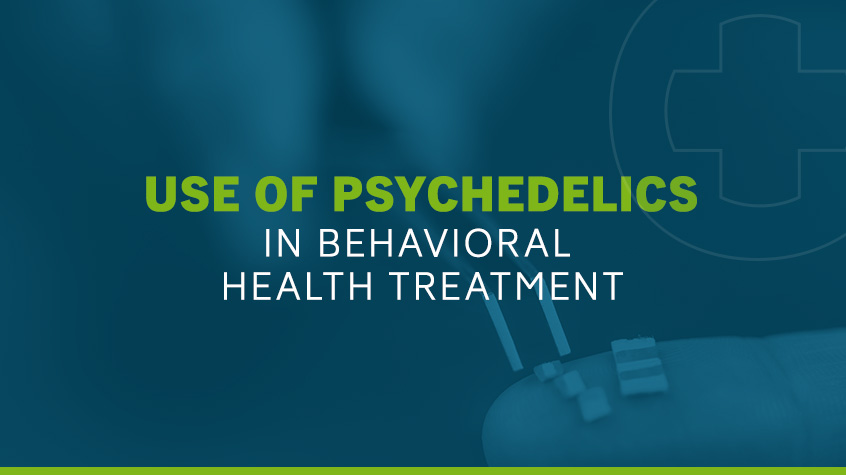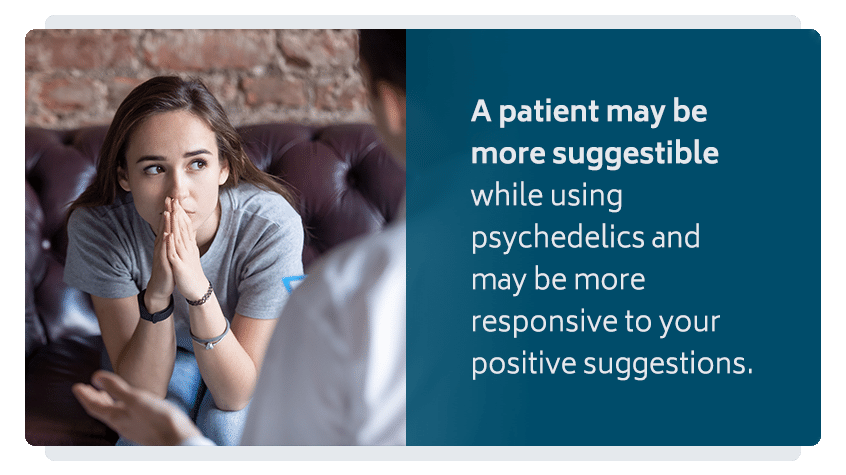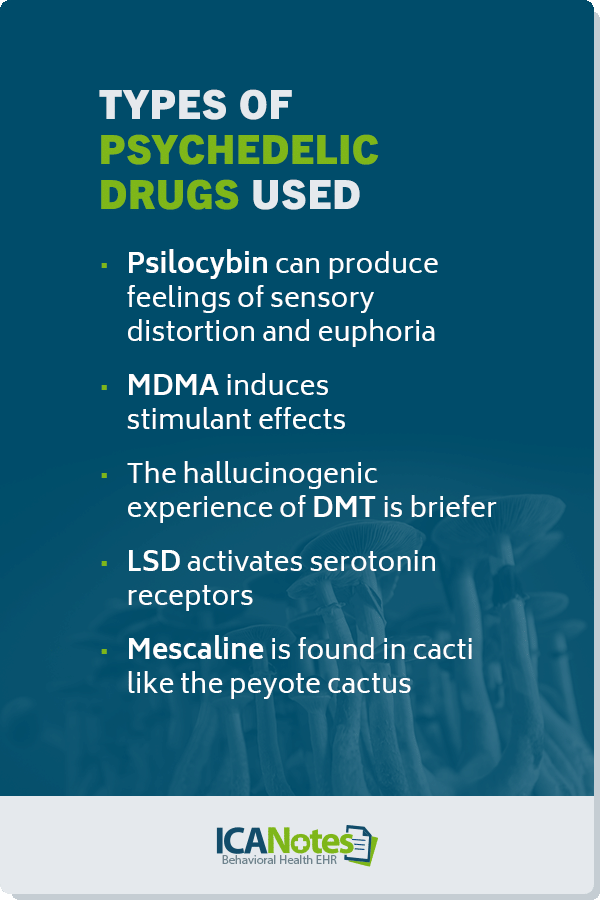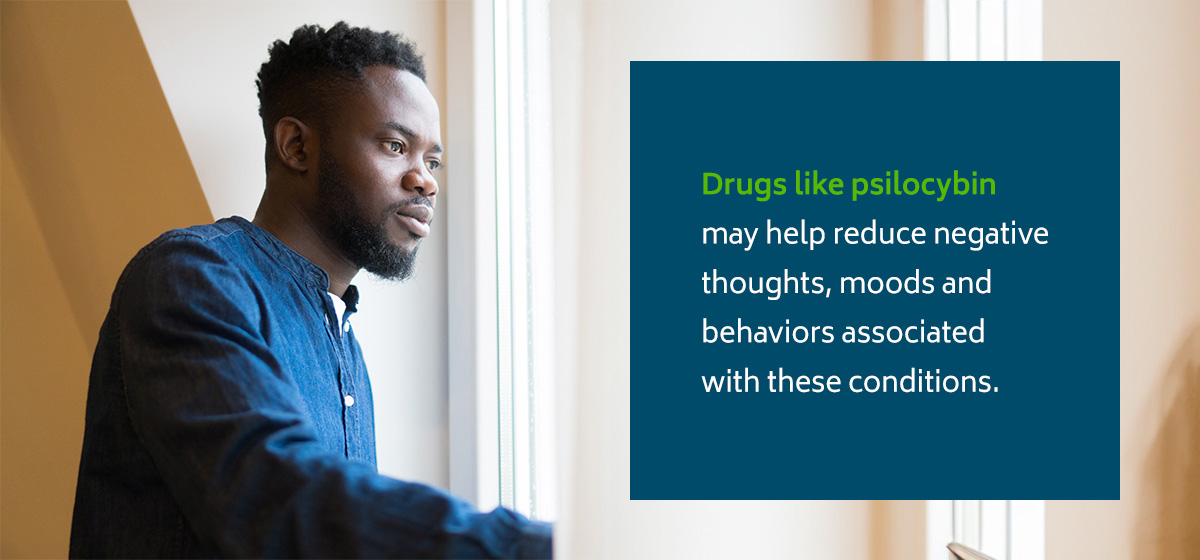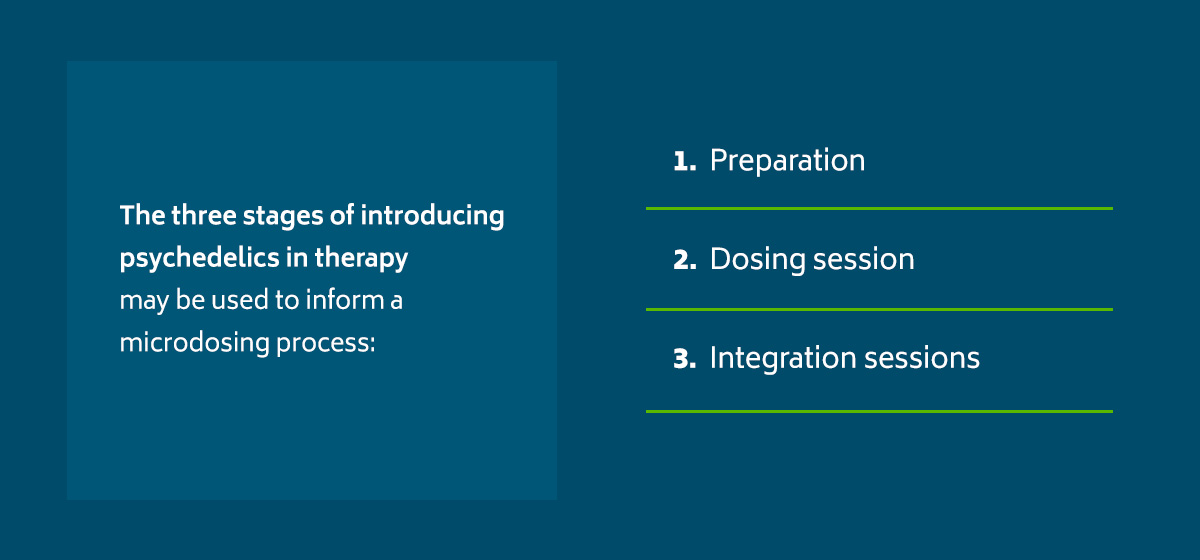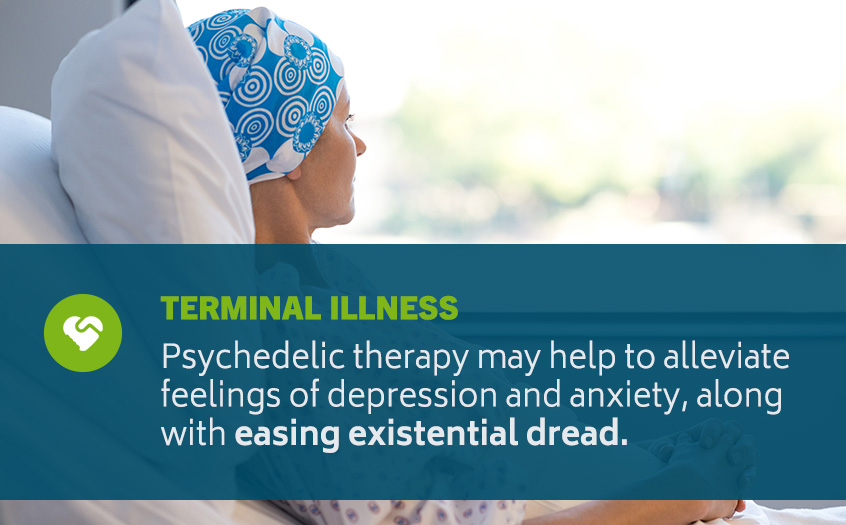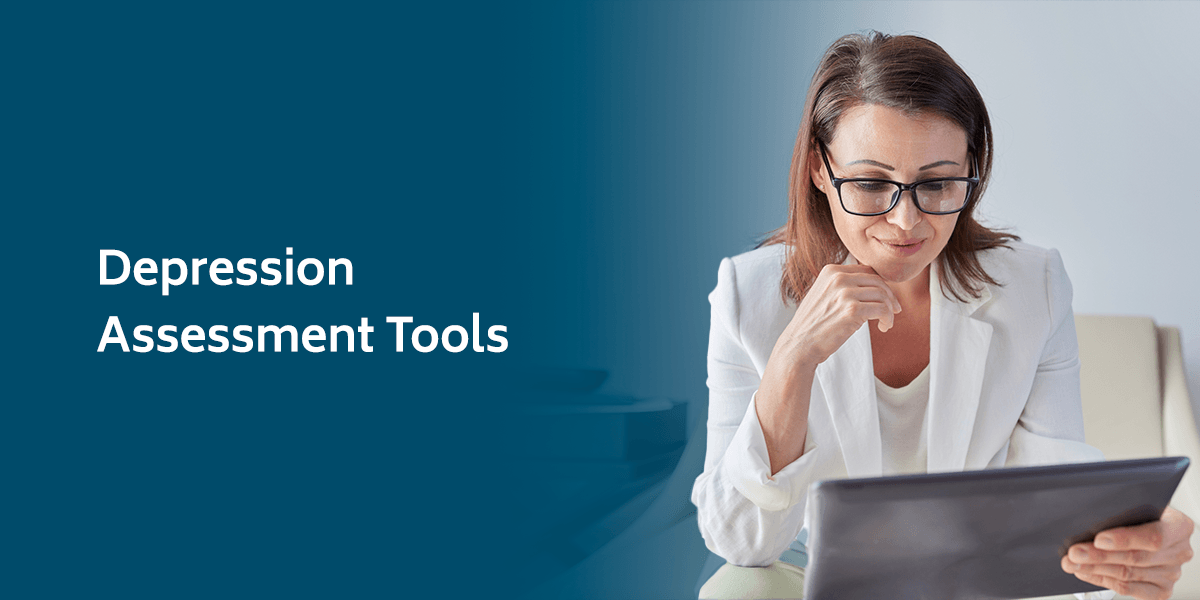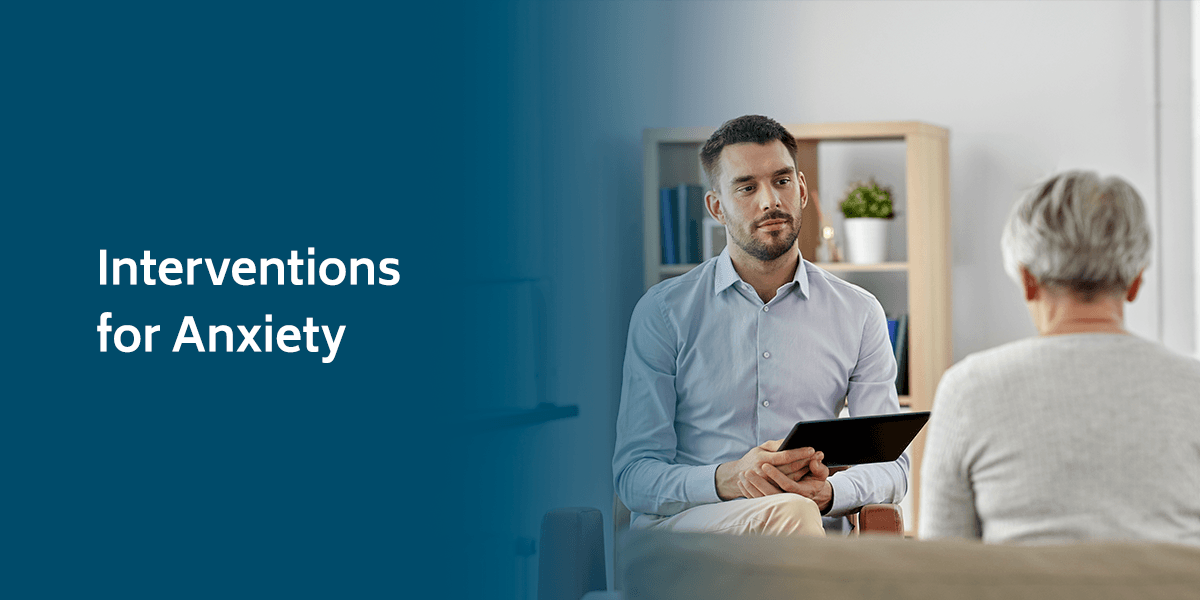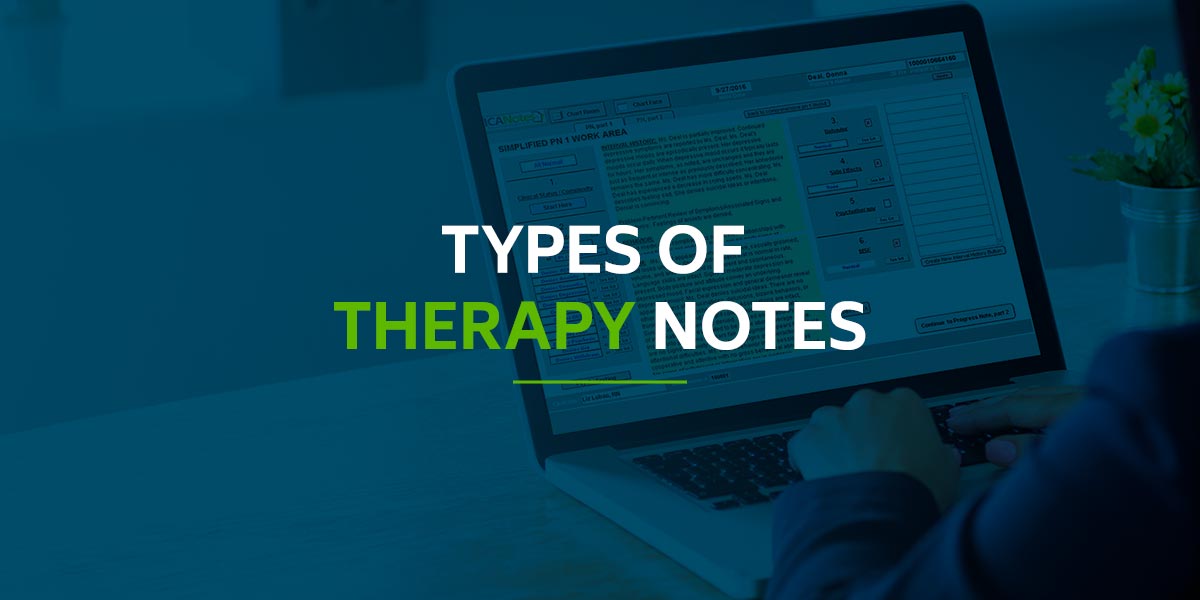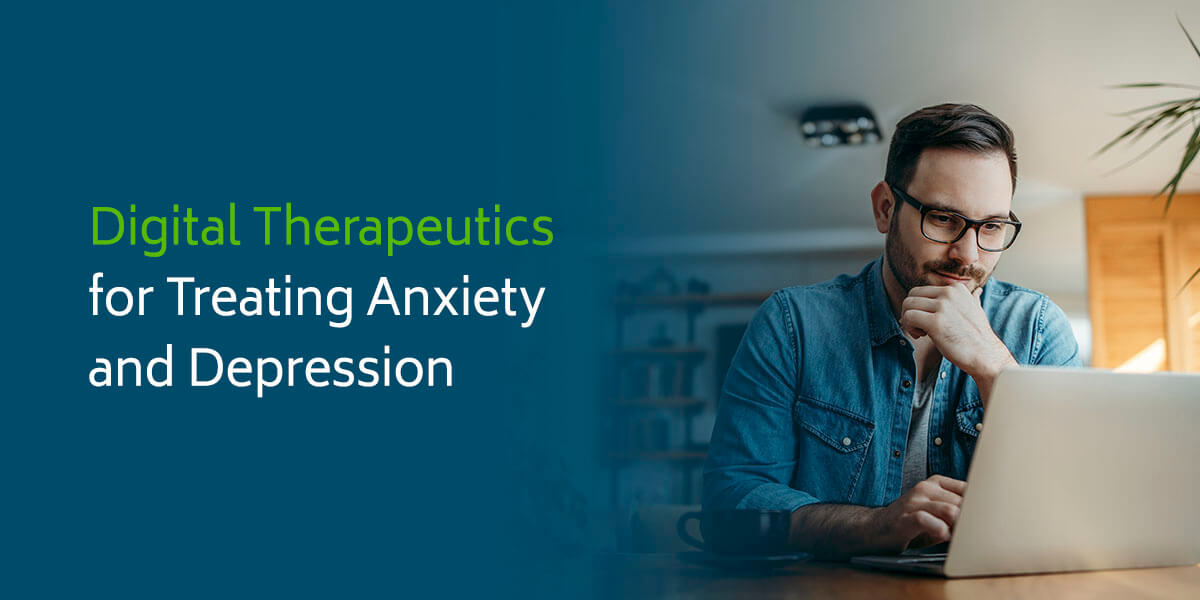Use of Psychedelics in Behavioral Health Treatment
Using psychedelics in behavioral health treatment, also known as psychedelic therapy, involves the use of compounds and plants that induce hallucinations. Though the formal study of psychedelics in behavioral health treatment is relatively new, emerging research suggests psychedelics could help alleviate symptoms, particularly after other treatment methods have failed. These substances are used to treat mental health issues, such as post-traumatic stress disorder (PTSD) and depression.
Including psychedelics in your behavioral health therapy may benefit both your patients and your practice. But before you decide whether to incorporate psychedelic therapy, you should understand its uses, how it works, the types of drugs used and the benefits and risks of this therapy.
Table of Contents
- How Psychedelic Therapy Works
- Types of Psychedelic Drugs Used
- Types of Psychedelic Therapy
- Uses of Psychedelic Therapy
How Psychedelic Therapy Works
Psychedelic plant compounds like psilocybin mushrooms and LSD induce hallucinations to treat mental health issues. Combining psychedelics with behavioral health therapy can increase the treatment's success. In many cases, psychedelic therapy is used with patients who have not responded well to other therapies.
While traditional medications can take weeks to start working or only work as long as the patient is taking them, psychedelic therapy can improve a patient's condition immediately, typically with just one dose. Though these drugs do not necessarily work the same way for every person, there are a few possible ways these drugs may function for behavioral health patients:
- Greater suggestibility: A patient may be more suggestible while using psychedelics and may be more responsive to your positive suggestions or to the benefits of their hallucinations.
- Psychedelic experience: Under the influence of a psychedelic, intensely meaningful experiences may shift a patient's belief system or mindset and lead them to change their behaviors or thinking.
- Changes in neurotransmitters: A neurotransmitter is a chemical messenger in the brain, and many drugs used for mental health directly act on neurotransmitters. Similarly, a psychedelic drug may act on a patient's neurotransmitters and improve their mood by changing their brain's behavior.
Along with the drugs themselves, whether this type of therapy leads to positive outcomes depends on various factors, such as psychological expectations, the physical environment and the therapeutic relationship between therapist and patient.
Types of Psychedelic Drugs Used
A few types of psychedelic drugs can be used in this type of treatment. However, most research has been conducted on psilocybin, MDMA, DMT, LSD and mescaline.
1. Psilocybin
Psilocybin is a hallucinogenic chemical that can be found in "shrooms," or magic mushrooms. These psychedelic mushrooms grow in the United States, Europe, Mexico and South America. Similar to other hallucinogenic drugs, psilocybin can produce feelings of sensory distortion and euphoria. Researchers are continuing to study the positive effects and safety of psilocybin's use in treating various medical conditions.
This psychedelic drug activates serotonin receptors. Typically, this process occurs in the prefrontal cortex, which is the part of the brain that impacts perception, cognition and mood. Additional regions of the brain that regulate panic responses and arousal may also be influenced by hallucinogens. While psilocybin can cause auditory or visual hallucinations, it may only distort how a person perceives the objects and people in their environment. Psilocybin's potency depends on:
- The substance's origin
- The species of mushroom
- The harvest period
- The growing conditions
- Whether the patient consumes the mushroom dried or fresh, the former of which has a much higher potency than the latter
Psilocybin can be consumed in capsule form, as a powder, or with food or tea. The effects of psilocybin will depend on the patient's expectations of the experience, their past experiences and how much of the drug they consume. The effects of this substance, including changes in thought patterns and sensory perception, can last several hours to days. Along with euphoria and sensory distortion, the effects of psilocybin may include:
- Peacefulness
- Dilated pupils
- Muscle weakness
- Distorted thinking
- Spiritual awakening
- Unusual body sensations
- The feeling that your surroundings are not real, known as derealization
- Visual distortion and alteration, like seeing vivid colors or halos of light
- A dream-like feeling of being disengaged from your surroundings, known as depersonalization
Microdosing Psilocybin
The drug psilocybin is widely associated with the act of microdosing. This involves taking a very small amount of a regular dose of a drug, generally about 5%-10%, to receive the physiological benefits while reducing potential side effects. For example, an individual may take approximately one-fifth or one-twentieth of a recreational dose of magic mushrooms to improve their mood without hallucinating. These doses are small enough that they do not impact regular functioning, making them an attractive option for many patients.
Microdosing with psychedelics for mental health treatment has become more popular in recent years, prompting research into their potential for treating anxiety disorders and emotional traumas. According to the University of Cincinnati, psychedelics like magic mushrooms can prompt the "rewiring" of unhealthy connections in the brain that lead to depression and anxiety. Drugs like psilocybin may help reduce negative thoughts, moods and behaviors associated with these conditions.
One study found that psilocybin in magic mushrooms helped individuals with alcohol use disorder reduce their drinking. Half of the volunteers in the clinical trial stopped drinking altogether, suggesting that psilocybin may be more effective than other drugs at treating addiction disorders.
Another study identified the effectiveness of microdosing for mental health over the course of 30 days, in which all participants reported improvements in mood and psychomotor performance. This study also highlighted other clinical trials where psilocybin microdosing was associated with:
- Improved cognitive functioning
- Reduced stress
- Improved emotional well-being
- Decreased anxiety
- Decreased depression
- Enhanced emotional stability
A recent study conducted by Johns Hopkins Medicine also highlighted the effectiveness of psilocybin as a psychedelic treatment for major depressive disorder symptoms. Researchers found that psilocybin-assisted therapy produced substantial antidepressant effects when combined with supportive psychotherapy.
Though further research is needed to determine the effectiveness, long-term side effects and placebo effect of psilocybin microdosing, it appears to be a promising therapeutic approach that can lead to significant improvements in mental health. The use of psilocybin or any other drug requires professional supervision for safety.
2. MDMA
Known for its role in ecstasy, MDMA is a synthetic drug that induces stimulant effects and causes hallucinations. The substance comes from the sassafras tree and increases the production of norepinephrine, dopamine and serotonin, all of which influence appetite, sleep and mood. Potential effects of MDMA include:
- Euphoria
- Distortion of time
- Increased energy
- Emotional warmth
- Decreased appetite
- Sensitivity to touch
- Distortion of the senses
The effects of MDMA, commonly referred to as "Molly," can last for hours. How a patient is affected by MDMA depends on the dosage. High doses can be dangerous, leading to damaged nerve cells in the brain.
3. DMT
Dimethyltryptamine (DMT) is a hallucinogenic chemical found in some plants in South America, Mexico and parts of Asia. DMT is similar to mushrooms and LSD, though the intense hallucinogenic experience tends to be briefer than with other substances. Possible effects of DMT include:
- Euphoria
- Visual hallucinations
- Auditory hallucinations
- Shifts in perceived reality and identity
- Altered sense of time, body and space
How quickly and how long a patient experiences the effects of DMT depends on how the drug is consumed and how much is ingested. Typically, the drug is either smoked, vaporized, snorted, injected or consumed orally in a brew. When DMT is consumed in a brew, such as the South American tea ayahuasca, the patient will have to wait to experience the effects, but these could last for hours. When the substance is smoked, on the other hand, the effects can be felt almost immediately and last only a few minutes.
4. LSD
Lysergic acid diethylamide (LSD) is a hallucinogenic, semisynthetic drug made from a combination of artificial and natural substances. LSD is derived from diethylamide, a nonorganic chemical and a fungus known as ergot. This hallucinogen activates serotonin receptors, stimulating the production of serotonin in the brain and allowing more stimuli to be processed. From this overstimulation, a user may experience changes in perception, emotion, attention and thought.
LSD is potent and can blur the lines between imagination and perception, with effects lasting for hours. Though sensations seem real, they are created by the brain and can involve multiple senses. Some users experience synesthesia, which is the blending of the senses. A patient who uses LSD may report "seeing" a sound or "hearing" a color. Other effects of LSD may include:
- Despair
- Anxiety
- Euphoria
- Sweating
- Dizziness
- Confusion
- Dry mouth
- Weakness
- Numbness
- Peacefulness
- Sleeplessness
- Unusual insight
- Lightheadedness
- Reduced appetite
- Terrifying thoughts
- Tremors or shaking
- Rapid mood swings
- Accelerated thoughts
- Heightened awareness
- Sense of transcendence
- Distorted perception of time
- Visual effects like distorted shapes, blurred vision, halos of light and vivid colors
5. Mescaline
Mescaline is a hallucinogen found in cacti like the peyote cactus, though it can also be produced synthetically. Similar to those who use LSD, DMT or psilocybin, a mescaline user may experience visual hallucinations. This drug can be consumed raw, dried or in a capsule. A patient can also smoke this hallucinogen. How long the effects of mescaline last depends on the dose. Along with visual hallucinations, users may experience:
- Euphoria
- Synesthesia
- Pupil dilation
- Distortion of time
- A dream-like state
As with other psychedelic drugs, the use of mescaline may be beneficial when combined with behavioral health therapy.
Types of Psychedelic Therapy
Similar to the variety of psychedelic drugs that can be used, therapists can use different types of psychedelic therapy in their practices. Below are a few kinds of psychedelic therapy:
- Psychedelics only: This type of psychedelic therapy refers to using a psychedelic drug alone without any additional treatment.
- Psychedelic-assisted therapy: This type of psychedelic therapy refers to using psychedelics alongside traditional treatments like psychotherapy, also called Psychedelic-assisted psychotherapy (PAP). Microdosing using drugs like psilocybin and LSD may also fall under psychedelic-assisted therapy if the doses are very small.
- Guided behavioral therapy: This type of psychedelic therapy refers to guiding a patient through the psychedelic experience while helping them remain calm and offering therapeutic suggestions.
Psychedelic Therapy Process for Microdosing
Although microdosing with mushrooms for mental health may be more widely explored, other psychedelics like LSD are also used to treat mental health conditions. In a controlled environment, these psychedelic drugs are administered in non-hallucinogenic doses under the guidance of mental healthcare practitioners.
Patients may receive microdoses every few days over an extended period of time. Throughout the psychedelic or psilocybin microdosing treatment process, patients may experience changes in their thinking, which can help improve their psychological condition and overall well-being. The three stages of introducing psychedelics in therapy may be used to inform a microdosing process:
- Preparation: In preparatory sessions, patients learn about the specific drug they'll be taking, including its potential positive and negative side effects. Patients are encouraged to ask questions, share their concerns and understand the potential range of experiences they may have under the influence of psychedelics. Clinicians may also collaborate with patients to outline their expectations, intentions and strategies for addressing potential challenges.
- Dosing session: When patients move to the dosing session, they receive comprehensive support from their therapist or clinician. Generally, therapists will encourage patients to engage with difficult memories, sensations or thoughts that arise. They also provide means for comfort and safety during the dosing session.
- Integration sessions: The integration phase focuses on the patient's experience during dosing and applying positive, relevant therapeutic techniques to make changes in their daily life. The clinician may reinforce the patient's desirable patterns of thought and behavior and encourage them to engage in present-focused techniques.
Uses of Psychedelic Therapy
There are many possible uses for psychedelic therapy, including addiction, terminal diagnosis, eating disorders, anxiety, depression and post-traumatic stress disorder (PTSD).
1. Substance Abuse and Addiction
The use of psychedelic therapy may help ease substance abuse and addiction symptoms. Mental health symptoms like depression often commonly occur alongside addiction. By reducing these symptoms, psychedelic therapy could make it easier for a patient to stop abusing substances. Patients with alcohol addiction who receive psychotherapy alone may not decrease their alcohol use, but patients who receive both psychotherapy and psychedelic therapy may drink significantly less.
The patients with alcohol addiction who are more likely to quit drinking are those who report intense psychedelic experiences. Psychedelic drugs like psilocybin may also help patients quit smoking, even for those who have not been able to quit smoking with other medications or therapy alone. Ibogaine is another psychedelic plant compound that may be useful in treating addiction, including substance abuse.
2. Anxiety and Depression
Many people experience symptoms of anxiety and depression, and psychedelic therapy can help ease these feelings. After a psychedelic experience using drugs like psilocybin, patients may report a significant reduction in their anxiety, depression and stress. There is current evidence that suggests psilocybin can be an effective treatment for depression and anxiety disorders. Additionally, your patients may have less frequent rumination and greater self-compassion.
Psychedelic therapy can be especially helpful for patients who have depression and have proven resistant to other treatments. A patient with severe depression may only need a couple of doses of a psychedelic drug like psilocybin to experience a reduction or even remission of their depression. Keep in mind that participants may be more likely to report these improvements if they had a quality psychedelic experience.
3. Terminal Diagnosis
For many who have received a terminal diagnosis, the thoughts of sickness and death could lead to feelings of anxiety and depression. Psychedelic therapy may help to alleviate these feelings of depression and anxiety, along with easing existential dread. For example, a patient with cancer may take psilocybin to reduce anxiety and depression. Research also suggests psilocybin or mushrooms can foster improved well-being and quality of life. Even months after their last dose of psilocybin, some patients continue to experience improvements in their mood.
These patients may have a spiritualistic or mystical experience in which they glimpse death, better envision their conception of the divine or feel like everything is connected. These experiences may mediate rates of depression and anxiety.
4. Eating Disorders
With psychedelic therapy, the mystical experience a patient has may help shift their body image to more positive thoughts and potentially ease the symptoms of an eating disorder. While under the influence of a psychedelic drug, a patient with an eating disorder may receive new insights that encourage them to adopt healthier habits. For example, female participants with anorexia nervosa underwent psilocybin therapy, where most reported positive changes after a single dose. Psilocybin therapy was also shown to facilitate transformative experiences that improve openness.
Eating disorders are often accompanied by other mental health symptoms, so psychedelic therapy may ease the symptoms that have led to disordered eating, such as restriction and other behavioral patterns of control.
5. Post-Traumatic Stress Disorder (PTSD)
Hallucinogenic drugs that produce psychedelic effects may also help ease the effects of trauma or post-traumatic stress disorder (PTSD). Psychedelic drugs like MDMA and ketamine have been studied in the treatment of trauma, though MDMA has generally been found to be more effective than ketamine, even when combined with psychotherapy. A dose of psilocybin may also be effective in reducing a patient's feelings of demoralization.
Potential Risks of Psychedelic Therapy
It's important to note that the use of psychedelic drugs in behavioral health therapy, while proven effective in many cases, still faces challenges like legal complexities and ethical considerations. Psychedelic drugs can be a potential treatment for some psychiatric and substance abuse disorders, but they may also pose some risks to patients, such as:
- Potential for abuse: Many psychedelic drugs are considered Schedule I substances. This means the Drug Enforcement Administration (DEA) considers these substances to have a high potential for abuse. Though not chemically addictive, psilocybin and LSD may cause patients to experience psychological addiction or withdrawal. Other drugs like MDMA can be addictive.
- Negative effects: Users may experience negative effects from using a psychedelic substance, such as anxiety, panic or disturbing hallucinations, agitation, fear, psychosis, delirium and confusion. A user may also experience withdrawal side effects. After taking MDMA, for example, a patient may experience insomnia, reduced appetite, confusion, anxiety, depression, irritability, memory problems or decreased interest in sex.
- Hallucinogen-persisting perception disorder: Hallucinogen-persisting perception disorder may occur in some patients. This condition refers to distressing, persistent alterations to how they see the world. Visual flashbacks can be experienced for weeks or years following the use of a hallucinogen, causing the patient to recall an intensely upsetting experience.
- Psychotic episodes: In susceptible patients, using a psychedelic can lead to psychological side effects, such as an episode of psychosis. For example, LSD may induce schizophrenia. Those with a family history or personal history of psychosis or bipolar disorder may be at greater risk during psychedelic therapy.
Why Trust ICANotes for Psychedelic Therapy Software?
As a behavioral health clinician, you may be interested in offering innovative treatment options for your clients. Whether you're providing microdosed psilocybin to your patients or conducting psychedelic-assisted therapy, it's critical to maintain proper therapy notes. At ICANotes, we can help you meet the increasing complexity of healthcare documentation. Our electronic health record (EHR) was developed by clinicians with extensive experience in behavioral health.
Our compliant, integrated software solution streamlines your nonclinical tasks to help you meet the most stringent of standards. We also offer unlimited mental health EHR support for practitioners. You can access our certified support experts for training sessions to simplify your psychedelic therapy documentation and help you improve patient care.
Start a Free Trial of Our EHR for Psychedelic Behavioral Health Therapy
If you want to include psychedelic behavioral health therapy in your practice, you need an EHR that makes documentation simple. At ICANotes, our behavioral health EHR improves compliance and reduces documentation time. With less typing, you’ll have more time for treating your patients and growing your practice. Our pre-configured templates can be used in any setting and discipline. Use ICANotes to create comprehensive progress notes, initial assessments, treatment plans and discharge summaries.
You can manage your practice using any electronic device when you choose our EHR. Start a free trial of ICANotes to experience our behavioral health EHR in action.
Start Your Free Trial Today

